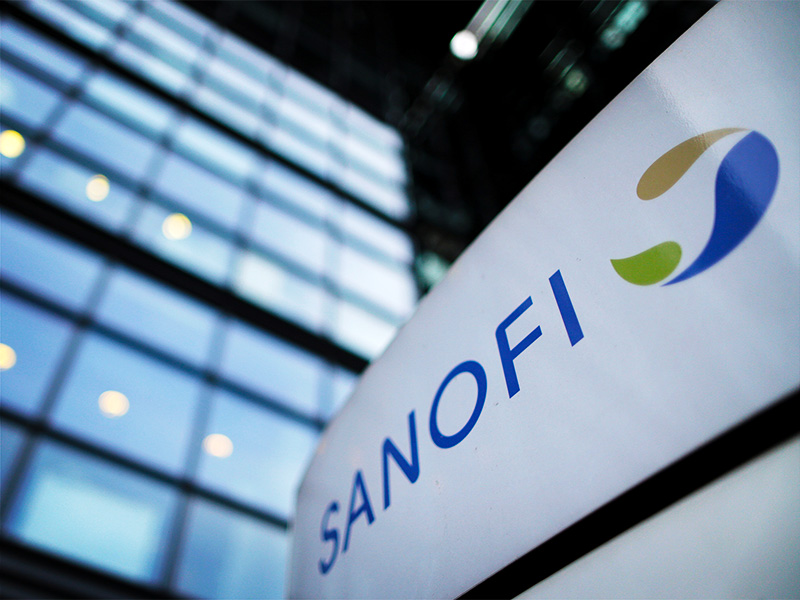Sanofi Pasteur MSD Financial Analysis App
Information Architecture – Interaction Design – Wireframes – Prototypes – User Testing
The problem we were solving
As part of a large project we had to produce an application to visualize sales data.
In the project about FG Governors I focused on the user interviews, so for this project I will take a look at the stakeholder interviews.
We see it so often, the focus is on the user. User Centered Design. Every job description you see tells you that the UX Designer should be focused on the user:
- Design interfaces users love to use.
- Do user research.
- Test everything with your users.
- Etc. etc.
And while all of this true, this only covers one side of the coin. The other side is where the stakeholders are living. And the companies they represent. If you only design with the users in mind, you are, in the end, going to fail.
Introduction to Stakeholder Interviews
User Experience Design is more than just representing the users within your design team. You are also representing the stakeholders. Yes, you are caught in the middle and it is your job that this doesn’t turn into being between a rock and a hard place. Establishing a good relationship with your stakeholders right from the start is essential if the project is to be a success.
When talking with the stakeholders, you are looking at a whole different set of needs and goals, compared to user needs and goals. This requires a more strategic approach. The company often has influence as well; people you might never see have their say in the shadows, people who have no subject matter knowledge, but who have lots of power nonetheless.
At Sanofi things were pretty relaxed. Our main stakeholder, Marieke Geurtsen, the Deputy Director Sales & Marketing, was positioned perfectly to guide the project from within. Not just that, she turned out to be enthusiastic, well-informed, humorous and a very nice person to work with overall.
Preparation
As with any interview preparation is mandatory. There is nothing worse than being interviewed by someone who has no plan, no template and is just making stuff up as we go. Things to consider are:
- Do some preliminary research on the company. Know some basics about their business.
- Do the same for their competition. At least know a few names that are likely to pop up.
- Be clear about the purpose, the goal, of your interview. Both to yourself and your stakeholder.
- Make a list of your questions. Brainstorm them, group them, rehearse them.
- Book the interview well in advance and reserve enough time.
- Finally, it is a good idea to provide the questions well in advance, so the stakeholder can prepare them and collect necessary data and information. This will improve the effectiveness of your interview.
When I entered the building I knew Sanofi-Pasteur MSD was a partnership between Sanofi-Pasteur and Merck to sell vaccines in the Dutch market. They have long term contracts with hospitals and other large medical organizations. This partnership was remarkable, as both companies are competitors. Other companies in the same field are Pfizer, Bristol-Meyers, Astra-Zeneca, Roche and of course Johnson & Johnson.
Marieke, at that moment, still was a bit of an enigma, as there was not much information available to me. This was fine, as I had prepared a section of the interview to get to know her better.
The Business & Project Goals
The first series of questions are about the business and will include among others:
- What are the brand values?
- What sets your organization apart from competitors?
- In your opinion, what direction is this business area heading?
- What is the main reason we are going to do this project?
- What are the goals of the project?
- What is your vision for this project?
- What are the potential pitfalls, what do we still need to clarify?
Now, of course I have signed an NDA with Sanofi before starting this project, so I will not be sharing any details about data and other information, but I will try to sketch a general picture on how the interview went.
Marieke came well prepared, she did receive and review the questions beforehand after all, and had prepared a kit for me with essential information and data about the company. She also did not come up with solutions when I asked about the project goals, but stated that they were looking to:
- Reduce time spent and workload needed for collecting monthly sales figures, as well as turning raw data into useful presentations for senior management.
Nice!
The Stakeholder's Role & Interests
It’s likely you will have a prolonged relationship with your stakeholders, so getting to know them always is a good thing. Showing honest interest in their lives will not only enrich my own, but also will benefit me when the project moves forward. Question I like to ask are:
- How long have you been working at Sanofi?
- Could you tell me a bit more about your role within Sanofi?
- What is your role in this project?
- What do you personally consider a success for this project?
- What worries do you have in relation to this project?
- How would you like to be involved in the project (e.g. see reports, participate in interviews, workshops, etc.)?
Leaving her personal details out, Marieke made it quite clear that she was to benefit greatly from this project, as she was the one who had the daunting task to collect the data and check the charts, graphs and figures that were presented to senior management. Not only did this eat up a lot of time, there also were too many mistakes slipping through, which made doing the presentations no fun at all.
She also explained that we needed to talk to each account manager individually and that she expected mixed feelings among them about the project, as each of them had their own “system” of maintaining monthly figures. I replied that we had dealt with this before and that it was a familiar scenario.
Value Proposition
Often forgotten, but very important. Actually, for a Product Owner this is one of his main responsibilities and it should reflect the Product Backlog; optimizing value. His input comes from the stakeholders.
Making this part of the stakeholder interviews not only will give me valuable insight; it demonstrates that I am concerned with this business element. A nice side effect can be, because I supply the questions before the interview, that the stakeholder will think about the value for the organization as well. Her possible inquiries within the company in preparation of the interview will not go unnoticed.
Typical questions can be:
- What typical problems do users have that this project will solve?
- What bad results come from these problems?
- What is the core value proposition of the project?
- What are the main marketing messages?
- If you had a magic wand, and could make a wish for this project, what would it be?
- If your boss had that magic wand, what would his wish be?
The problems that were put on the table evolved around loss of time, lack or reliability of the reports and eventually… problems with bonuses for the account managers because the figures were not complete, not correct, etc.
That last one was important to me. Earlier Marieke stated that she expected resistance towards the new product; how can the account managers have objections using a tool that will remove issues with the bonuses?
The magic wand questions always brings me valuable results. Here it became clear that a dashboard that was easy to use for everyone involved was the ultimate end result. Once again Marieke showed good preparation, as she had put the question to the Director and received an answer. Good!
Who are the Users?
By clarifying what the stakeholders already know about the users, or who they would like the users to be, I ensure that my user research will be focused.
- Who are the users? What roles can we give them? Is there a primary user group?
- What user research has already been done that might be relevant for this project?
- Who do we want the users to be in 5 or 10 years?
- What do you think the user goals might be?
- What would define success for your users?
The target audience for this project was very simple. The account managers, the deputy director, and senior management. The latter would just need to view the visualizations, but the others would all be involved in the process of collecting data, analyzing data, and presenting the results.
User goals were stated as being able to have a smoother process with clearer insights. Here I needed to follow up, moving away from the solution, trying to dig deeper and find the underlying goals. In the end, of course, these would be revealed during the user interviews, but it can be useful to know how stakeholders look at this.
Process & Workflow
We need to know the constraints of the project. That will make it easier for our team to decide how ambitious we can be about research and resulting design changes.
Question can vary at this point. This is where preparation becomes extra important. Some examples are:
- What has been decided about the project so far?
- What requirements have been established so far?
- What, if any, technical decisions have been made for the project?
- What data points are collected for the current process today? How is information shared?
- What tools are being used today to achieve user goals? (Please provide screenshots, output examples, anything that might be relevant)
- What is missing in the current process, that you would like this project to cover?
The answers we got here gave us a framework to start with. Essentially, nothing had be done or decided on the new project. I was amazed and impressed about the work everybody did to manage the current situation; it was a lot and much of it was redundant or should be.
Marieke was able to give some insights in the kind of reports they would like to have. Besides the obvious sales charts, Year-To-Date figures, comparisons to estimates, she also requested several Moving Annual Totals because of the seasonality of the underlying products. This was starting to look more and more interesting.
In Conclusion
The importance of good stakeholder relations and interviews can not be overstated.
This is why I make it a habit to provide the questions up front. There is nothing worse than catching a stakeholder off guard and make them feel unprepared because they don’t have necessary information at hand. Give them time to prepare. They will be grateful you did, and you will benefit in the long run.
Always end on a nice note and make sure you let them feel that the feedback they gave you is valuable and important. One thing I also like to do before I leave is ask a little feedback on the interview itself. How did they experience it? Is there something for me to learn? All good stuff.
A stakeholder interview is just a beginning of a long, bumpy road of project work.
In the case of Sanofi it turned out to be a very pleasant project. Of course there were bumps, but the good relations that were established early in the project made sure we took those bumps in style. The final dashboard still is one of the best visualizations I have worked on.









